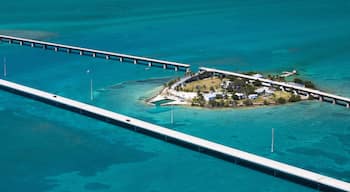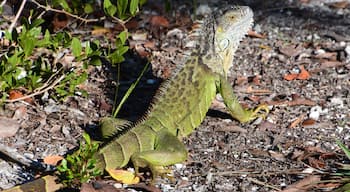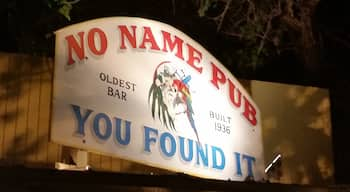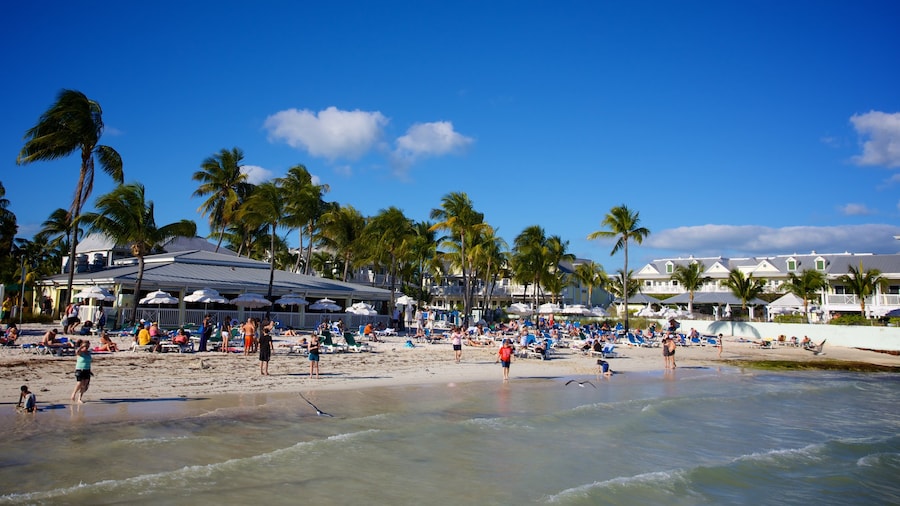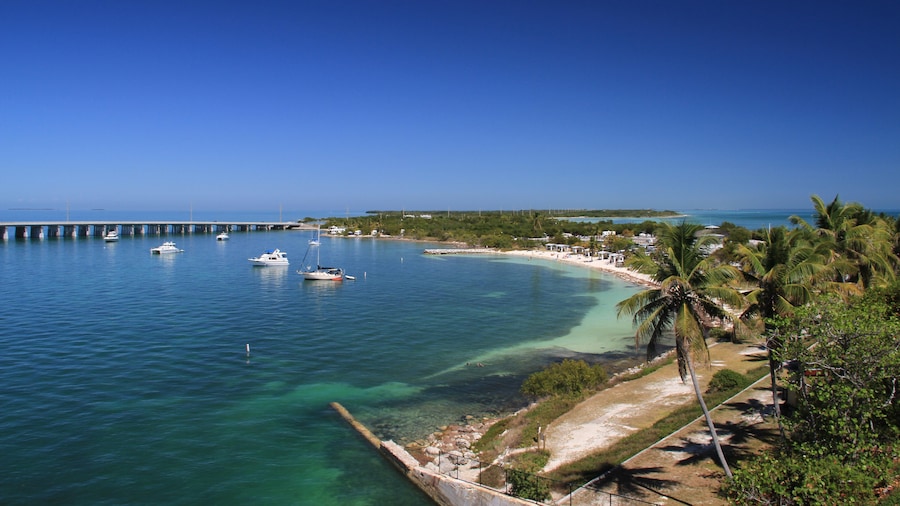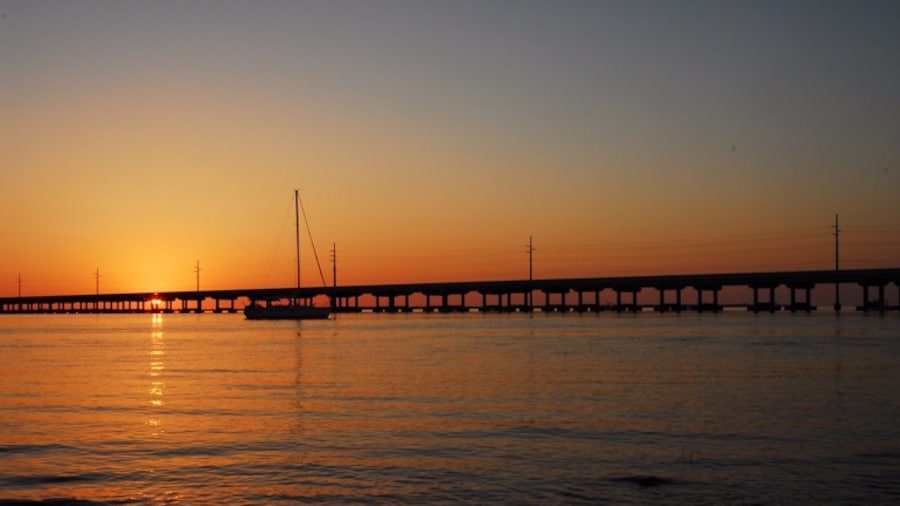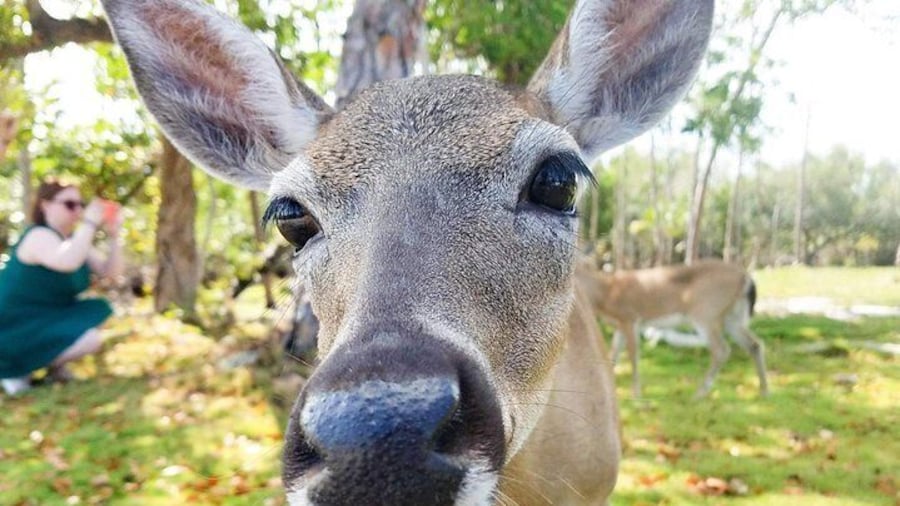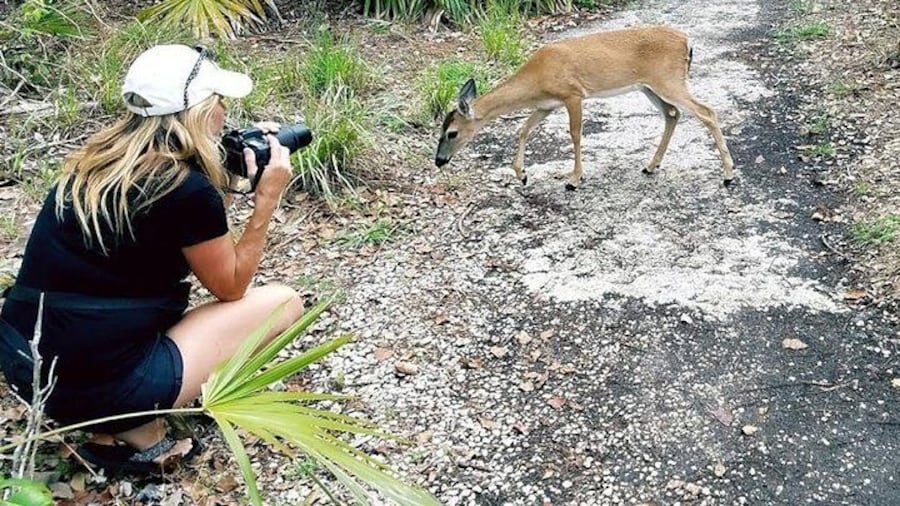Venture to Big Pine Key and the surrounding Lower Keys, where the bright lights and crowds fade away and the gentle rolling of the currents takes over. This 35-mile (48-kilometre) wide stretch between Key West and Marathon is a peaceful place to enjoy the unique natural beauty of the southernmost island chain in the continental United States.
Enjoy Florida’s long, warm days by relaxing on the sand or splashing in the clear warm waters of Bahia Honda State Park, one of the most beautiful beaches you’ll find in the Americas. Look for Bahia Honda Bridge, a historic abandoned railway bridge, which makes an impressive backdrop for photos.
Dive or snorkel at Looe Key and admire the vivid coral formations, around 6 miles (9.6 kilometres) offshore of Big Pine Key. Keep watch for sea turtles and eagle rays swimming by and explore the deliberately sunken shipwreck of the Adolphus Busch.
Big Pine Key and the Lower Keys are home to an abundance of animals at national wildlife refuges and a portion of the Florida Keys National Marine Sanctuary. Stop off at the National Key Deer Refuge and spot adorable miniature deer particular to this area as they roam around the pine forests.
Rent a kayak and head out to the untouched backcountry to explore around No Name Key or Coupon Bight with its plentiful mangroves. Look for long-legged birds, such as egrets and herons, wading in the waters and see ospreys soaring overhead. Dolphins can also occasionally be seen in the shallows. Journey west to the quiet Saddlebunch Keys, a group of uninhabited islands with mangroves and lagoons that are especially lovely in the glow of a Florida Keys sunset.
Away from the electric lights of the more bustling areas of the Florida Keys, the Lower Keys attract astronomers who have a clear view of the night sky. The Big Pine area is a 30-minute drive from neighboring Marathon or the airport at Key West.





